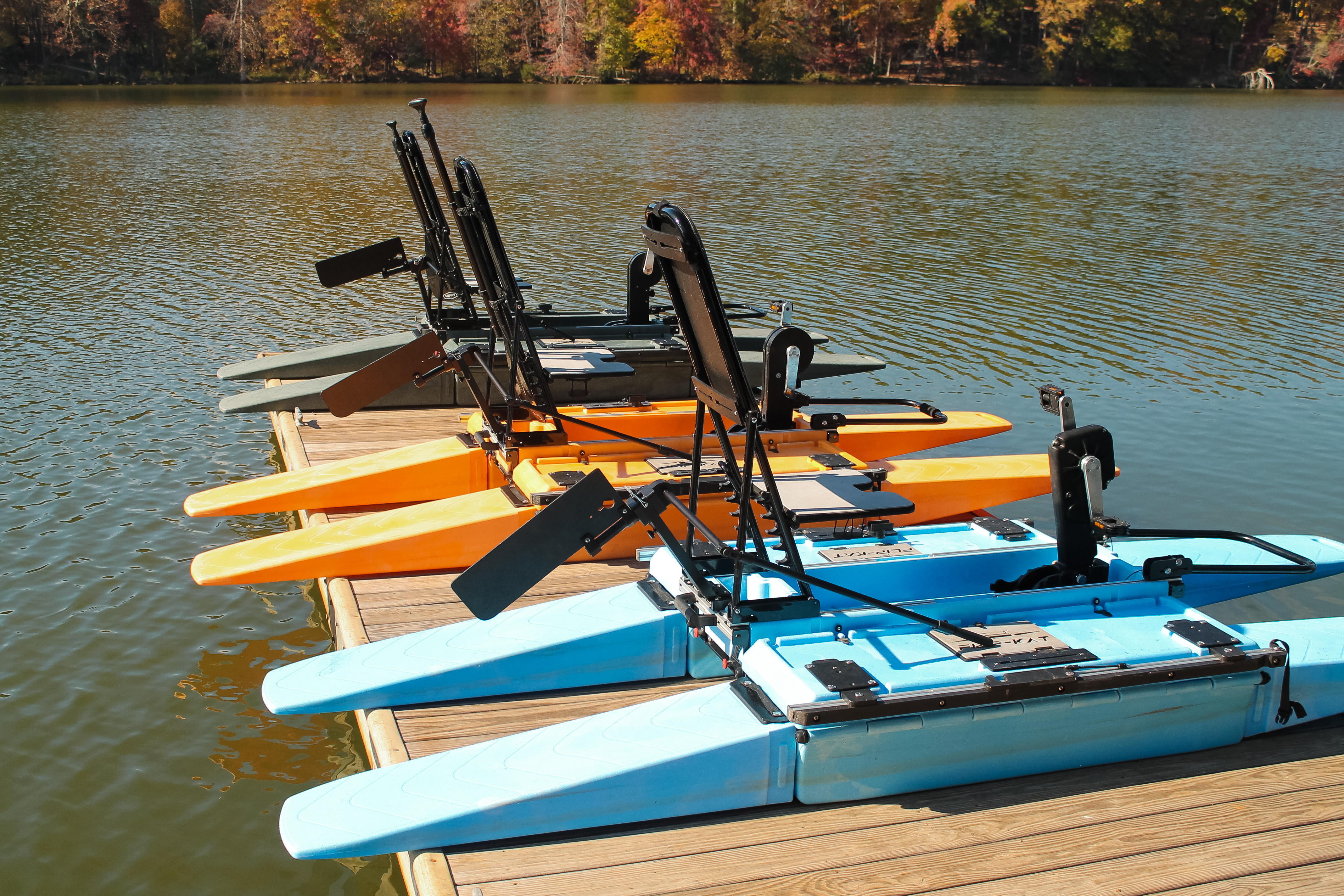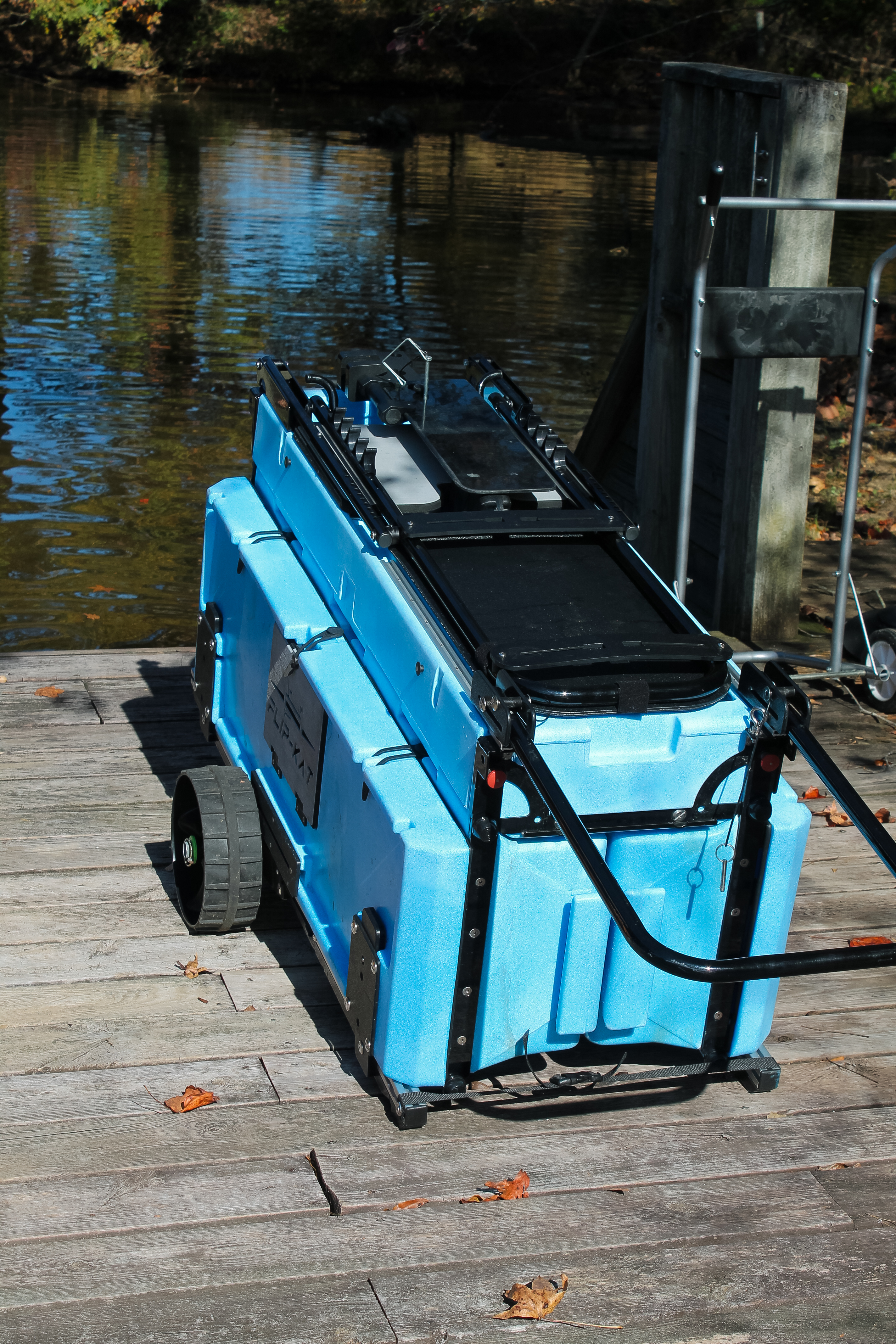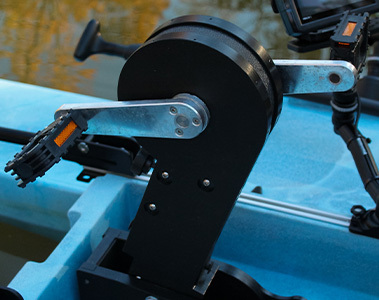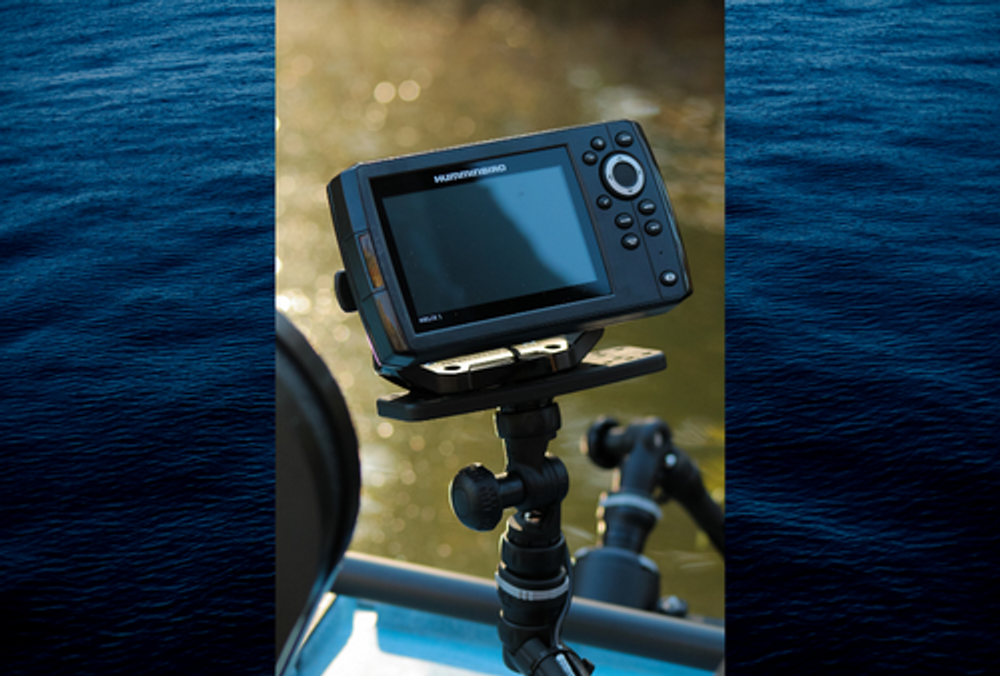Choosing a Photography Kayak
7th Nov 2022
Table of Contents:
Choosing a Photography Kayak
Why Take Photos From a Kayak?
When near the water, it’s extremely hard to resist the urge to take a photo (or several). There is simply something so beautiful about the sun hitting the dancing water, creating that magical glisten. The colorful reflections in the water during sunrise and sunset can easily be mistaken for a painting. Naturally, one will want to capture this beauty forever with a photograph. Some of the most beautiful photographs out there are photos on or near the water. Plus, if you want to get creative, you will have to find the angles that most people will not attempt… such as inches away from the surface of the middle of the lake. A kayak gets you as close as possible to the best photography angles without actually being in the water. If you’re in the market for the perfect photography kayak, you will first have to consider some factors including stability, weight capacity, storage, and mobility. There is one portable kayak on the market that truly has it all when it comes to photography kayaking.

Stability
To start, the most important factor when buying a photography kayak is stability! You do not want to invest thousands of dollars on high quality camera equipment and a kayak just to flip over when taking a photo from a creative angle. Even if you spend a few thousand on what you expected to be a stable kayak, the money ends up wasted because it cannot support normal photography movements. Paying a little extra for serious stability goes a long way when it comes to photography kayaks. On a photography excursion, you never know what kind of angle you may need to get a shot; sometimes you will want to quickly stand up. This is only possible if the kayak is stable enough. Not to mention, if you want crisp, clear photographs, you will need to be stable. The chances of blurry photographs are high if your kayak is constantly rocking side-to-side. The general rule of thumb when it comes to kayaks is the wider it is, the more stable it will be.
Questions to ask when considering Stability:
- How does the design of the product contribute to its stability?
- Are there any additional features or accessories that can enhance its stability?
- What is the maximum weight capacity it can support without compromising stability?
- Are there any specific situations or conditions that may affect its stability, such as wind or uneven terrain?
Floor Space
Along the same lines as width, you will want a kayak with a large deck or floor space. A sit-on-top kayak offers much more space to move around freely than a sit-in kayak that covers your legs. The more floor space the better for stability because you can safely stand up to take photos. Ample floor space is a must if you plan on bringing a tripod with you on your photography excursion. Tripod legs tend to take up a decently large amount of space. If you want to stand up to check the camera viewpoint on the tripod, you will need even more deck space to move around it.
Questions to ask when considering Floor Space:
- What is the total floor space of the product, and how does that compare to the space you have available for it?
- Are there any specific design features that can maximize floor space utilization?
- How easy is it to access and utilize the floor space, especially if you need to move around inside the product?
- Are there any weight or height limitations that may affect the amount of floor space you can use?
@noisyriveroutdoors HAPPY NEW YEAR!! We wish you many days of #pedaling & #paddling in 2025??? #FLIPKAT #NoisyRiverOutdoors #NRO #portablekayak #kayaker #kayaking #paddle #pedalkayak #hunter #fishing ♬ Tuesday's Gone - Lynyrd Skynyrd
Storage Compartments
Behind the scenes of one beautiful photo is often an unexpected amount of camera options, lenses, and tripods. Photography gear can seriously add up. That being said, you will want a kayak that offers plenty of storage compartments. Besides photography equipment, you will probably want to pack items for your trip such as sunscreen, snacks, and a portable fan. It is important to note that if you opt for a sit-in kayak, you will most likely not be able to reach many storage compartments from inside the cockpit. If you are planning on bringing a good amount of gear with you, it will be smart to choose a sit-on-top kayak.
Questions to ask when considering Storage Compartments:
- How many storage compartments are included with the product, and what are their sizes and shapes?
- Are the storage compartments easily accessible and convenient to use?
- How secure are the storage compartments, and is there any risk of items falling out or getting damaged?
- Are there any restrictions on what items can be stored in the compartments?
Weight Capacity
Photography gear usually consists of a bunch of smaller pieces of equipment. Individually, these pieces might not weigh much, but altogether this gear starts to really add up. If you take this plus the weight of yourself and the kayak, you may be looking at a large number. It’s imperative to estimate what this number might be before investing in a photography kayak. All kayaks have a weight capacity that they can handle before they start to sink or flip. Going back to the most important factor, a photography kayak must be stable enough to support you and all your gear.
Questions to ask when considering Weight Capacity:
- What is the maximum weight capacity of the product, and how does that compare to the weight of the items you plan to carry?
- Are there any restrictions or limitations on item weight distribution or placement?
- How does the weight of the product itself affect its overall weight capacity?
- What are safety measures in place to prevent overloading or exceeding the weight capacity?
Comfortability
Next, photography excursions can be time consuming so it’s important to select a kayak that is comfortable. Comfortability will stem from the position and type of seat the kayak has. It is strongly recommended to purchase a kayak with an adjustable seat for photography purposes. There are even great kayaks on the market with leaning posts if you need to stand up to get the good angles. Overall, you will want to choose a kayak that has a seat located in a good standard position. For example, the adjustable combo chair/leaning post on the Flip-Kat® portable kayak can sit lifted, even higher than most sit-on kayaks, on top of its wide deck. Here, you would never get a crick in your neck while trying to check the camera viewpoint on the tripod because you are already at the perfect angle.
Questions to ask when considering Comfortability:
- How comfortable is the product to use, especially for extended periods of time?
- Are there any adjustable features or settings that can improve comfort?
- How does the product's design contribute to comforts, such as ergonomic seating or cushioning?
- Are there any potential comfort issues to be aware of, such as excessive heat or humidity?

Transportation
Nowadays, you do not need to live near the water or have ample storage space in your home in order to own a kayak. If you do, you can select your photography kayak from nearly all options on the market. If not, do not fret! Portable kayaks were designed for those who live in smaller homes and have to drive to the water but still want to be able to go kayaking. You can select from folding, inflatable, and modular kayaks. It is recommended to choose something easy enough to transport and launch by yourself, such as a folding kayak with a built-in handle and wheels.
Questions to ask when considering Transportation:
- What are the transportation options for the product, such as car or truck transport or shipping?
- How easy is it to move the product between locations, especially if it is large or heavy?
- Are there any additional costs or requirements associated with transportation?
- What safety measures should be taken during transportation, such as securing the product or protecting it from damage?
Mobility
Another factor, sometimes overlooked, is mobility. The whole point of photography is getting creative angles to capture a moment in time. If you cannot get to a creative angle thanks to a hard-to-control or slow-moving kayak, then what could have been a beautiful photo of the fleeting moment cannot be captured. A pedal kayak can be a good, speedy option. Many fantastic photo opportunities take place near land from in the shallow water. This creates a contention with most photography kayaks on the market. Many kayaks cannot handle shallow water with obstacles such as rocks, logs, and land. Plus, if you were considering a pedal kayak, you really have one option… Luckily it’s the best option there is! The Flip-Kat® can travel over obstacles without you even noticing. It uses whisper quiet nonstop pedal technology that features a unique kick-up propeller shaft designed to pop up and over whatever gets in its way. This means you can pedal through the rocky shallows with ease.
Questions to ask when considering Mobility:
- How easy is it to move the product around once it is in place?
- Are there any mobility features or accessories that can enhance its ease of use?
- What surfaces or terrains is the product suitable for, and are there any limitations or risks associated with mobility?
- What safety measures should be taken to ensure safe and secure mobility?
Pedal vs. Paddle
Operating a camera typically requires two hands. While paddling a kayak is simple and intuitive, you will probably want your hands free to be able to quickly grab the camera and get “the shot.” If you see a beautiful eagle flying overhead, it will not wait for you to put the paddle down quietly in a safe location where it will not roll off the kayak, grab your camera, adjust all the settings, and capture the moment. Sometimes you might only have time to hit the shutter, which can only be accomplished if your camera is already in hand. A pedal drive kayak with instant hands free forward and reverse helps you maintain position in wind or current. That being said, professional photographers tend to prefer pedal kayaks. However, there are many benefits of paddling such as a lighter, cheaper kayak. Regardless of if you end up choosing a pedal kayak or traditional kayak, you are guaranteed to get great photos by just being out on the water surrounded by nature.
Pros and Cons of a Paddling Kayak for Photography:
Pros:
- Quieter operation, which is ideal for getting close to wildlife and capturing natural sounds without disturbing the environment.
- Ability to paddle and maneuver the kayak in tight spaces and shallow water, making it easier to get up close to subjects.
- Easier to set up a camera tripod or mount on the kayak for stable shots while paddling.
- Better exercise and a more immersive experience while paddling.
Cons:
- Requires a lot of upper body strength and stamina, which can be tiring for long periods of time.
- Slower speed, which can make it more difficult to keep up with fast-moving subjects or cover long distances.
- Can be difficult to steer and control in windy or choppy conditions, which can affect the stability of your shots.
- Can be less stable than a pedal kayak, which can make it more difficult to keep your camera steady while taking shots.

The Best Photography Kayak on the Market!
In order to get the most beautiful photos possible, you will have to invest in the perfect photography kayak with the most features. There is one kayak in particular that checks all the boxes when it comes to photography kayaking. That kayak is The Flip-Kat® by Noisy River Outdoors. It even has the extra advantage of being portable, folding up into a compact box that will fit in any standard closet. If you’re in a rush to catch the sunrise, it quickly unfolds and launches as well. The name Flip-Kat® actually stands for Fast Launch Integrated Portable Kayak with Catamaran Hulls. Those catamaran hulls are over eleven feet long and the lifted deck is four feet wide, making it the most stable photography kayak of all. You would be able to sit/stand, use a nice sturdy tripod, and move around on the wide deck. You can adjust the seat/leaning post to over fifty four standing or sitting positions between 90 and 45 degrees… Talk about getting “the shot!” Taking advantage of the leaning post with the Bixpy electric motor and adjustable tiller handle makes standing operation easy. The Flip-Kat® offers a multitude of storage compartments and T-Tracks within short reach. It can accommodate a large amount of camera equipment with its weight capacity of 350 pounds. Not sure if you prefer to pedal, paddle, or use a Bixpy electric motor? Why choose when you can have all three with the Flip-Kat®! The innovative pedal technology is built-in, ranking the Flip-Kat® above all other portable kayak options. The kick-up propeller will get you to those hard-to-reach spots that often lead to the best photographs! Flip-Kat’s® optional wide open canopy flips up to help keep the glare off your screen, the sun off your back,and the rain off your lens. If you are serious about nature photography, the Flip-Kat® is the right choice for you. It not only has the most innovative features all in one kayak, but it is sure to help you protect your photography equipment with its unmatched stability.
Pedaling kayak for photography
Pros:
- Hands-free operation, which allows for easier camera handling and setting up shots without having to worry about paddling.
- Greater speed and efficiency, which can be useful for covering long distances or keeping up with fast-moving subjects.
- Greater stability and easier to maintain a steady position for longer periods of time, which can be ideal for capturing video footage.
- Can be less tiring for longer periods of time, allowing you to focus on your photography without getting fatigued.
Cons:
- Louder operation, which can be more likely to scare away wildlife and disturb the natural environment.
- Less maneuverability in tight spaces, making it more difficult to get close to subjects in shallow water or narrow channels.
- More difficult to set up a camera tripod or mount on the kayak, which can affect the stability of your shots.
- Can be less immersive and offer fewer physical benefits compared to paddling.
Photography Kayak FAQs
When choosing a kayak for photography, it's essential to consider features such as stability, maneuverability, and storage. Look for kayaks with ample deck space to accommodate your camera equipment and accessories, and consider features such as bungee cords or tie-down points to keep your gear secure. Additionally, look for kayaks with comfortable seating and adjustable footrests to ensure that you can maintain a stable position while taking photos.
Stability is a crucial factor when choosing a photography kayak, as it affects your ability to stay steady while taking photos. Generally, wider kayaks with a flatter bottom provide more stability than narrower kayaks with a V-shaped hull. However, keep in mind that kayaks with greater stability may sacrifice some speed and maneuverability.
The design of the kayak can have a significant impact on its performance for photography. For example, longer, narrower kayaks tend to be faster and more efficient, but they may sacrifice some stability and maneuverability. Similarly, kayaks with a pronounced keel and tracking fins are designed for straight-line paddling and can be useful for following moving subjects, while kayaks with a flatter hull are more maneuverable and better suited for navigating tight spaces.
Photography kayaks can be made from a range of materials, including polyethylene, composite materials, and inflatable PVC. The material used affects the kayak's weight, durability, and performance. For example, kayaks made from composite materials tend to be lighter and faster but may be more fragile than polyethylene kayaks. Inflatable kayaks are lightweight and portable but may not provide the same level of performance as rigid kayaks.
The amount of storage space you need in a photography kayak depends on the amount of equipment you plan to bring along. Look for kayaks with ample deck space and storage compartments, and consider using dry bags or waterproof cases to protect your gear from water damage. Additionally, consider using gear tethers or attaching equipment to the kayak with bungee cords or carabiners to keep it secure while you paddle.






